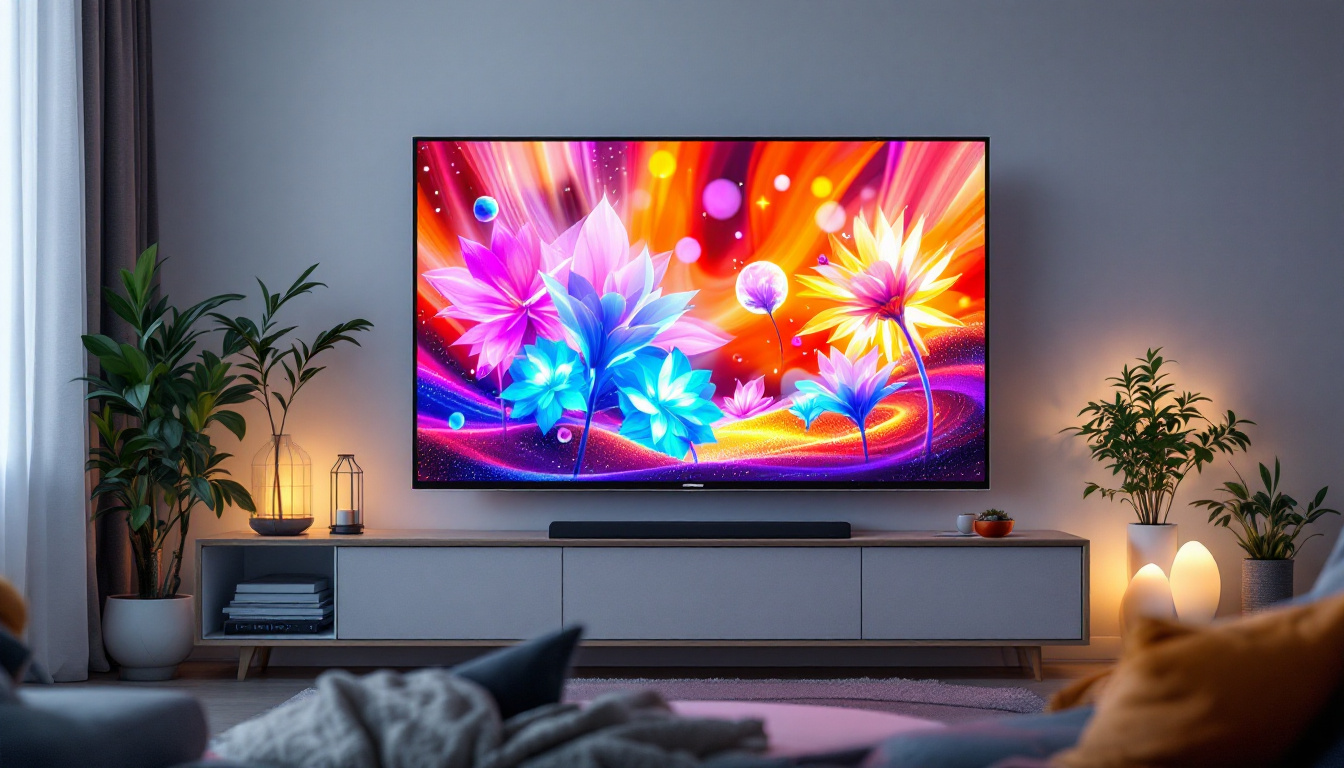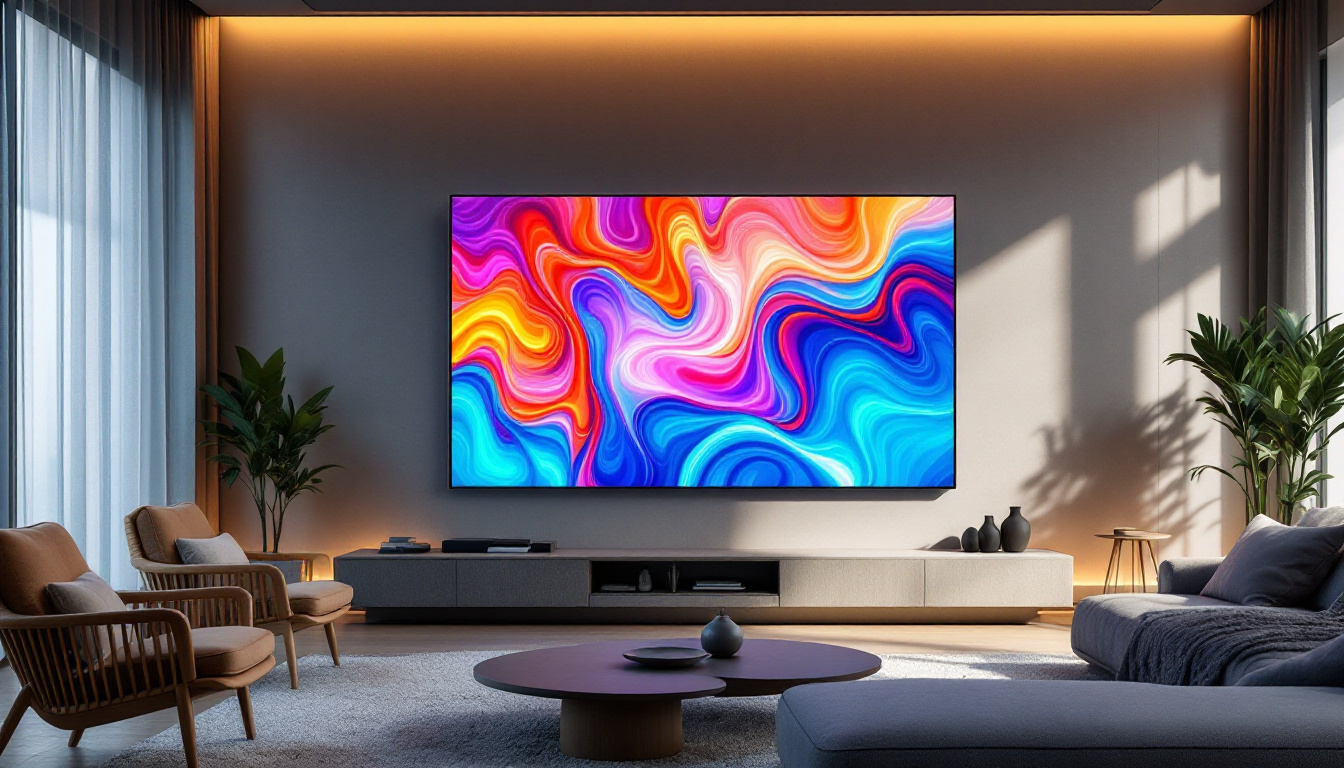Is LED Better Or LCD: LED Display Explained
In the world of display technology, two terms often come up: LED and LCD. While they are frequently mentioned together, they represent different technologies that have distinct characteristics and applications. This article aims to clarify these differences, exploring the advantages and disadvantages of each, and ultimately helping you decide which is better suited for your needs.
Understanding LCD Technology
Liquid Crystal Display (LCD) technology has been a staple in the display market for many years. It uses liquid crystals sandwiched between two layers of glass or plastic. When an electric current passes through the liquid crystals, they align to allow varying amounts of light to pass through. This process creates images on the screen.
How LCD Works
At its core, an LCD relies on a backlight to illuminate the display. This backlight can be made from various sources, including fluorescent lamps or LEDs. The liquid crystals themselves do not emit light; they only modulate the light that comes from the backlight. This is a crucial point, as it affects the overall brightness, color accuracy, and contrast of the display.
LCDs are widely used in televisions, computer monitors, and mobile devices due to their slim profile and energy efficiency. However, the quality of an LCD display can vary significantly based on its backlighting technology and the quality of the liquid crystals used. For instance, newer models often incorporate advanced technologies such as In-Plane Switching (IPS) or Vertical Alignment (VA), which enhance viewing angles and color reproduction, making them suitable for a wider range of applications, from graphic design to gaming.
Advantages of LCD Displays
One of the main advantages of LCD technology is its ability to produce sharp images with good resolution. LCDs are also generally lighter and thinner than older technologies like CRT (Cathode Ray Tube) displays. They consume less power, making them more energy-efficient, which is particularly beneficial for portable devices.
Moreover, LCDs are less prone to screen burn-in, a phenomenon that can affect other types of displays, such as OLEDs. This makes them a reliable choice for varied content, including static images and video. Additionally, the longevity of LCD screens is often greater than that of their counterparts, as they typically have a longer lifespan due to their robust construction and lower heat generation. This durability not only contributes to their popularity in consumer electronics but also makes them a preferred choice in commercial settings, where displays are used for extended periods without the risk of degradation in image quality.
Exploring LED Technology
Light Emitting Diode (LED) technology is often associated with LCDs, but it is a distinct technology. LEDs are semiconductor devices that emit light when an electric current passes through them. In the context of displays, LEDs are primarily used as a backlight for LCD screens, but they can also form the basis of an entirely new type of display known as OLED (Organic Light Emitting Diode).
How LED Works
LED displays utilize arrays of tiny light-emitting diodes to create images. Unlike traditional LCDs that require a backlight, OLED displays generate their own light. This means that each pixel can be turned on or off independently, allowing for true blacks and a wider color gamut.
LED technology can be implemented in various ways, including edge-lit and full-array backlighting. Edge-lit displays use LEDs along the edges of the screen, while full-array displays have a grid of LEDs behind the entire screen, providing better uniformity and contrast.
Advantages of LED Displays
One of the most significant advantages of LED displays is their superior contrast ratio. Since LEDs can be turned off completely, they can achieve deeper blacks compared to traditional LCDs. This results in more vibrant colors and an overall better viewing experience, especially in darker environments.
Additionally, LED displays are known for their energy efficiency. They consume less power than traditional LCDs, making them an environmentally friendly option. Their longevity is another advantage; LED technology typically lasts longer than other display technologies, reducing the need for frequent replacements.
Moreover, LED technology has advanced significantly over the years, leading to innovations such as MicroLED and MiniLED displays. MicroLEDs consist of microscopic individual LEDs that can create stunningly high-resolution images with incredible brightness and color accuracy. MiniLEDs, on the other hand, use smaller LEDs for backlighting, allowing for more precise control over local dimming zones, which enhances contrast and improves overall picture quality. These advancements are paving the way for even more immersive viewing experiences, making LED technology a cornerstone of modern display solutions.
Furthermore, the versatility of LED displays extends beyond televisions and monitors. They are widely used in various applications, including digital signage, automotive displays, and even architectural lighting. The ability to create flexible and transparent displays has opened up new possibilities in design and functionality, allowing for innovative applications in both commercial and residential settings. As the technology continues to evolve, the potential for LED displays seems limitless, promising even more exciting developments in the future.
Comparing LED and LCD Displays
When comparing LED and LCD displays, it is essential to understand that LED is often used as a backlighting method for LCDs. Therefore, the comparison is more about the backlighting technology rather than two entirely separate display types. However, the differences in performance can be significant.
Brightness and Color Accuracy
LED-backlit LCDs generally offer better brightness levels than traditional LCDs with fluorescent backlighting. This increased brightness can enhance color accuracy and make images appear more vivid. In contrast, standard LCDs may struggle to produce the same level of brightness, especially in well-lit environments.
Moreover, LED displays can achieve a broader color spectrum, which is crucial for applications requiring precise color reproduction, such as graphic design and photography. This capability makes LED technology a preferred choice for professionals in creative fields.
Viewing Angles
Viewing angles can vary significantly between LCD and LED displays. Traditional LCDs often suffer from poor viewing angles, where colors and brightness diminish when viewed from the side. However, newer LED technologies, particularly those using IPS (In-Plane Switching) panels, have improved viewing angles, allowing for consistent image quality from various perspectives.
For users who often share their screens or watch from different angles, an LED display with IPS technology may provide a better experience compared to a standard LCD.
Applications of LED and LCD Displays
The choice between LED and LCD displays often depends on the intended application. Both technologies serve various purposes across multiple industries.
Television and Home Entertainment
In the realm of home entertainment, LED TVs have become increasingly popular due to their superior picture quality and energy efficiency. They are often favored for watching movies and sports, where vibrant colors and deep blacks enhance the viewing experience.
On the other hand, traditional LCDs are still found in budget-friendly options, providing satisfactory performance for casual viewers who may not require the latest technology.
Professional Use Cases
For professionals in fields such as graphic design, video editing, and photography, the choice of display technology is critical. LED displays, particularly those with high color accuracy and wide color gamuts, are preferred for tasks that demand precise color reproduction.
Conversely, standard LCDs may suffice for general office tasks, such as word processing and spreadsheet management, where color accuracy is less of a concern.
Cost Considerations
When it comes to cost, there are notable differences between LED and LCD displays. Generally, LED displays tend to be more expensive than traditional LCDs due to the advanced technology and materials used. However, the price gap has been narrowing as LED technology becomes more mainstream.
Initial Investment vs. Long-Term Savings
While the initial investment for an LED display may be higher, it is essential to consider long-term savings. LED displays often consume less power, leading to lower electricity bills over time. Additionally, their longer lifespan means fewer replacements, making them a more economical choice in the long run.
For consumers and businesses alike, evaluating the total cost of ownership can provide a clearer picture of the value offered by each technology.
Future Trends in Display Technology
The display technology landscape is continually evolving, with advancements that promise to enhance user experiences further. Emerging technologies, such as MicroLED and MiniLED, are set to challenge the current paradigms of LED and LCD displays.
MicroLED Technology
MicroLED technology utilizes tiny individual LEDs to create images, similar to OLED but without the drawbacks associated with organic materials. This technology offers incredible brightness, contrast, and color accuracy, potentially surpassing current LED and LCD technologies.
As MicroLED becomes more accessible, it may redefine the standards for display quality, providing consumers with even more options.
MiniLED Backlighting
MiniLED technology represents a significant improvement in backlighting for LCDs. By using smaller LEDs, MiniLEDs can provide more localized dimming zones, resulting in better contrast and improved black levels. This innovation allows LCDs to compete more effectively with OLED displays, offering a compelling option for consumers.
Conclusion: Making the Right Choice
Ultimately, the decision between LED and LCD displays depends on individual needs and preferences. For those seeking superior picture quality, vibrant colors, and energy efficiency, LED displays are often the better choice. However, traditional LCDs still hold their ground in budget-friendly options and specific applications.
As technology continues to advance, the lines between these display types may blur, leading to new innovations that enhance user experiences. Whether for home entertainment, professional use, or casual browsing, understanding the differences between LED and LCD displays empowers consumers to make informed choices that best suit their needs.
Discover LumenMatrix’s Advanced LED Display Solutions
Ready to experience the ultimate in display technology? LumenMatrix is at the forefront of LED innovation, offering a wide array of LED display modules tailored to your unique needs. From vibrant Indoor and Outdoor LED Wall Displays to dynamic Vehicle and Sports LED Displays, our solutions are designed to captivate and engage. Whether you’re looking to enhance brand visibility with an LED Poster Display, create interactive environments with Floor LED Displays, or customize your message with Custom and All-in-One LED Displays, LumenMatrix has you covered. Embrace the future of visual communication with our Transparent LED Displays and let your business shine. Check out LumenMatrix LED Display Solutions today and transform the way you share your message with the world.































